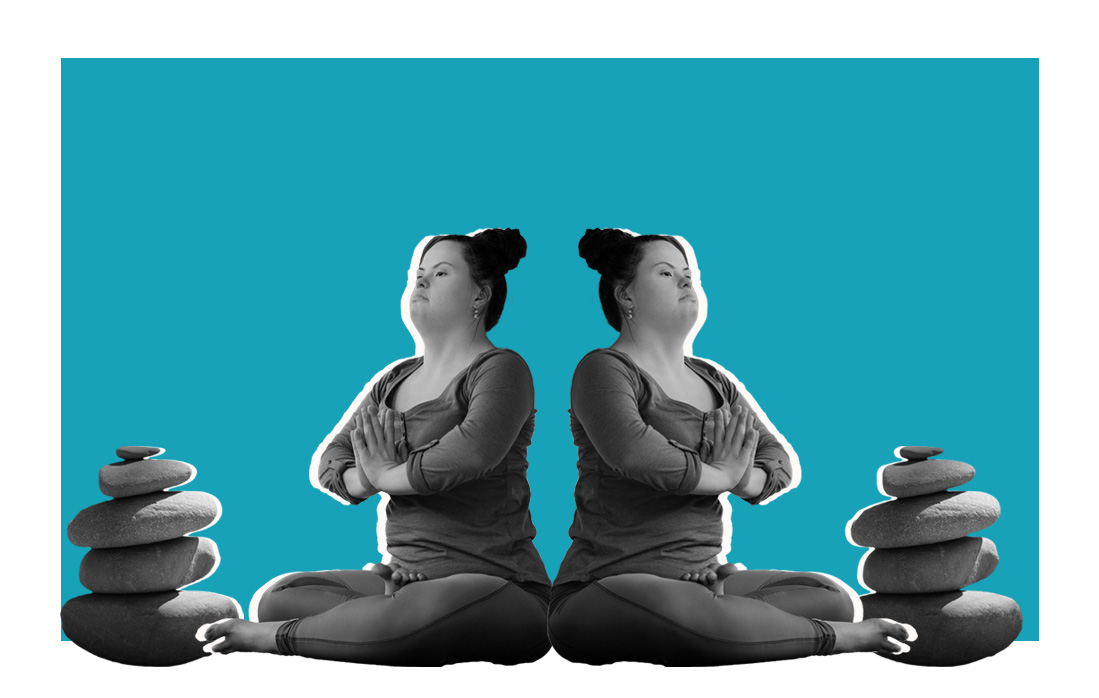
A bedroom should be one of the most relaxing spaces in your home, right? After all, the whole point of the room is to be a space to rest and rejuvenate. However, that isn’t always the case. Whether it’s cluttered, doubling as a home office, or just lacking design-wise, many of our bedrooms aren’t the sleep oases they could be. And I say “our” because I, too, have often slept in a bedroom more stress-inducing than stress-relieving. So, we’re all in this together.
To help us all make our bedrooms as stress-free as possible, I rounded up the best ideas and tips out there for turning your bedroom into a stress-free sleep oasis, from organization to aromatherapy to mattresses.
Declutter
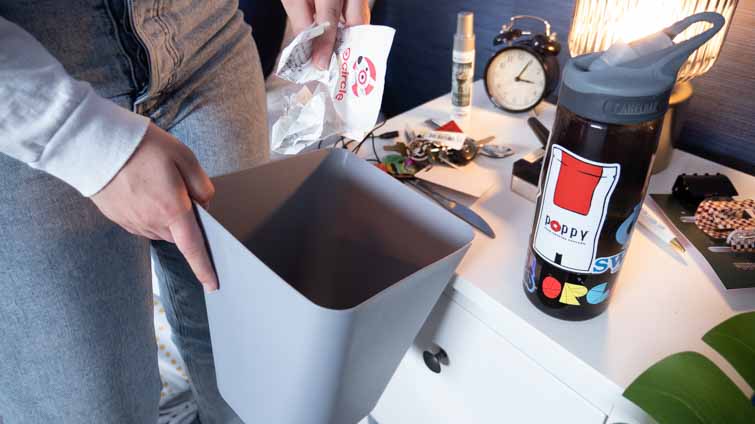
As someone with a strong tendency to clutter up my own space, I understand both the value and struggle of decluttering. But as hard as it can be to get organized and stay organized, I know I almost always feel better when things are in their right place.
And researchers have found that to be true for other people, as well. One study found that clutter in people’s homes had a negative impact on their well-being. Similar findings have been reported in a study among young adults and a study on clutter in home offices.
“Decluttering a space can have a subconscious effect on the brain as, the less you have to think about, the easier it will be to ease into a calmer, relaxed state,” therapist Stephanie Stathas, LPC, told Sleepopolis. She said that seeing a physically cluttered space can make you feel just as “cluttered” mentally, which can result in anxiety, stress, or depression.
To get started on decluttering, North Carolina-based interior architect and designer Zachary Luke recommended clearing everything out of your bedroom and completely cleaning the space. “Then place your items back in one by one and really think, ‘Do I need this in the bedroom?’ You’ll find that you don’t need one-fourth to one-half of what you had in there before doing this process,” Luke told Sleepopolis.
A personal decluttering tip: if you do decide to say goodbye to some items in your decluttering process, look into your donation options. Many items can find a new life with a friend or family member, at local charity, or even on sites like Facebook marketplace. I like to take donations to my local scrap exchange.
Get Organized
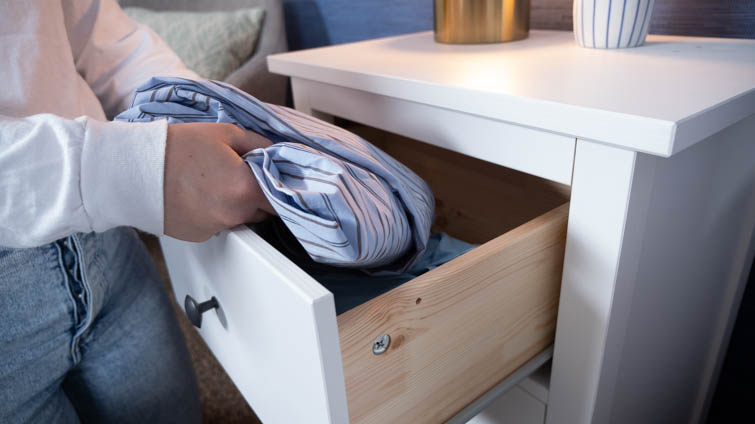
Once you’ve successfully decluttered, it’s important to make sure everything you’re keeping has a place to go. After all, your room will likely just become cluttered once again if you don’t solve the problem of organization.
Wisconsin-based interior designer Anna Franklin said storage is an important consideration to her when designing a bedroom, so that items can be stored away and prevent “visual clutter.”
“Keep storage hidden,” Franklin told Sleepopolis. “Instead of having open storage in the bedroom, keep it tucked away in the closet or hidden under a bed.”
How you’ll store your possessions will depend on what they are. For example, I have a fairly extensive shoe collection that I’m not willing to part with, so I have two different hanging shoe racks in my bedroom to keep them off my closet floor. Various kinds of bins, baskets, dressers, and closet organizers can be beneficial to bedroom organization, so shop around a bit to find what makes the most sense for your bedroom and your belongings.
Here’s a few examples of great bedroom storage I found on Amazon:
- Underbed storage bags
- Hanging shoe shelves
- Over the door hanging organizer
- Ottoman with storage
- Five drawer organizer with fabric storage bins
Additionally, take advantage of every opportunity for storage, particularly if your bedroom is small. If your current nightstand doesn’t have any drawers or shelves, consider replacing it with one that does. That can be a great place to stash away small items that clutter the surface of the nightstand.
Check Your Color Scheme
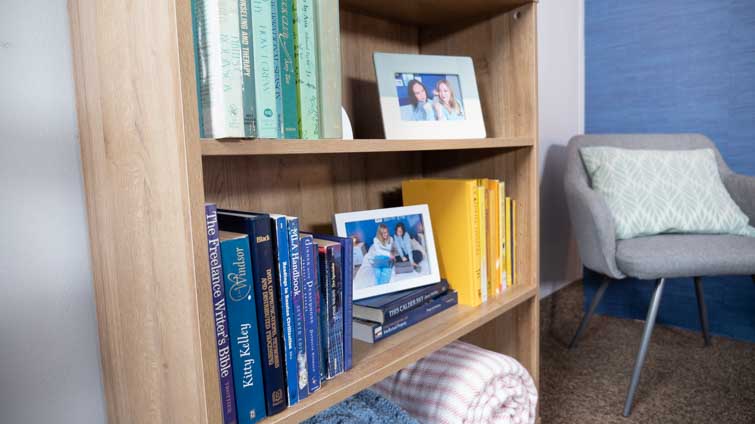
Maybe you’ve spent a lot of time choosing a color scheme for your bedroom, or maybe it’s completely haphazard. Either way, your color choices (or lack thereof) could be contributing to the stressful ambience in your bedroom.
“Color affects our mood,” Stathas said. “For example, colors such as red and yellow tend to evoke feelings of energy and stimulation for most people. However, colors that remind you of nature, such as blue or green, tend to have a soothing impact on the mind.”
One study found a correlation between positive feelings toward a color and positive feelings toward physical objects that are that color. The study suggested that blue may be widely loved because of its association with clear skies and clean water. Following that logic, colors that remind you of something calming or serene could be a good choice for your bedroom color scheme.
From an interior design perspective, Luke and Franklin both noted that blue was a go-to color for creating a relaxing space. But blue isn’t the end all be all. Luke cited gray or pastel purple — the shade of his own bedroom — as calming color choices, while Franklin said you can “use deep greens and purples to give off a luxurious, relaxing ambiance.” However, Luke recommends steering clear of any colors that could be too exciting or stimulating, such as red.
Calming down your color scheme could involve repainting your walls, but there are other small ways you can incorporate calming colors into your bedroom. Be intentional about choosing your bedding, curtains, wall art, and other decorative items.
Think About Textures and Materials
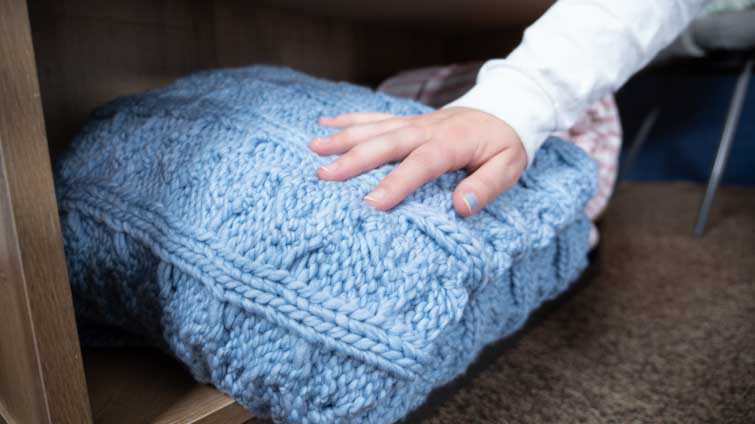
When choosing decorative items, Franklin recommended to “look for items that appear and feel soft to the touch, such as plush velvet and boucle,” which is a kind of fabric woven from looped yarn. She said, “Soft-looking and feeling textures will further add a warm feeling to the space, while promoting comfortability.”
If you have hardwood floors in your bedroom, she recommended adding a rug. “The texture will add depth and warmth to the space, grounding the room in a cozy ambiance,” Franklin said.
Luke recommended adding touches of stone or wooden materials to the bedroom, again evoking a sense of nature.
Bring a Touch of Nature with a House Plant
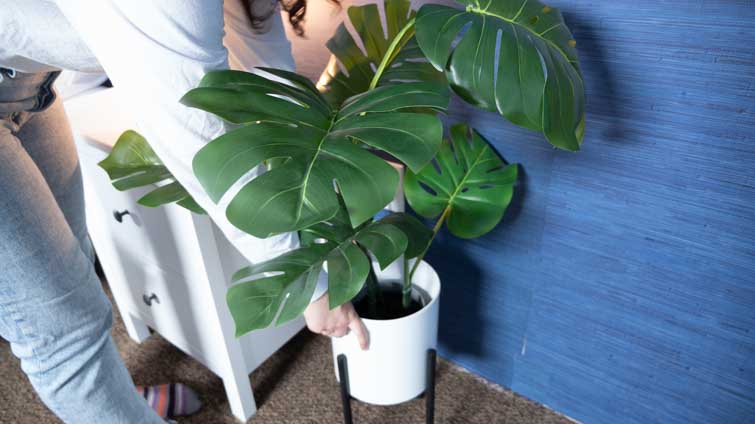
If nature is one of your go-tos for relaxation, consider adding a house plant or two to your bedroom. Whether it’s a flower, succulent, or other plant, a house plant can add a subtle pop of color to your room, as well as bring in another natural element.
Some studies have found indoor environments with plants can generate more positive psychological perceptions than rooms without plants, such as making the room feel happier, calmer, or more friendly. Even just one potted plant made a difference in how participants perceived a room. And a more recent study in Beijing found that having certain plants in your sleep environment could help you sleep better.
Some popular houseplant options, according to Gardner’s World, include:
- Spider plants
- Aspidistras
- Monstera
- Hoyas
- Philodendrons
- Snake plant
Invest in a Weighted Blanket

One of my favorite ways to relax is cuddling up under a weighted blanket. Weighted blankets are usually filled with glass beads, plastic pellets, or other materials to create the weighted effect. A weighted blanket that’s about 10 percent of your body weight can provide Deep Pressure Touch, which is the same tactile sensation humans get from hugging or cuddling that increases serotonin and melatonin levels, while decreasing cortisol levels.
Basically, laying under a weighted blanket is a bit like getting a hug. I’ve personally found weighted blankets very relaxing, especially as someone who is often anxious or easily stressed.
I’ve reviewed lots of weighted blankets, but one of my favorites is the Gravity weighted blanket. It has a velvety cover that makes me want to snuggle up under it all day.
Create a Separation Between Work and Sleep
For many people, reminders of work are the last thing that should be in a “stress-free oasis.” If you work from home or you study at home, try to find a workspace outside of the bedroom. Keeping work and sleep separate will help you relax, as you won’t be reminded of tasks on your to-do list every time you glance across the room.
If you have no choice but to set up a workspace in your bedroom, there are still some steps you can take. Franklin’s recommendation: Create as much separation between your home office and sleep space as possible.
“If you have a larger bedroom, use an actual physical item, such as a room divider or screen, to break the room up,” Franklin said. “However, if you have a smaller bedroom, a great option is to use a foldable shelf that turns into a desk, or a desk that can be folded up and tucked away when not in use.”
And harkening back to tip #1: Keep your workspace decluttered.
Pick a Mattress You Can’t Help but Want to Lay On
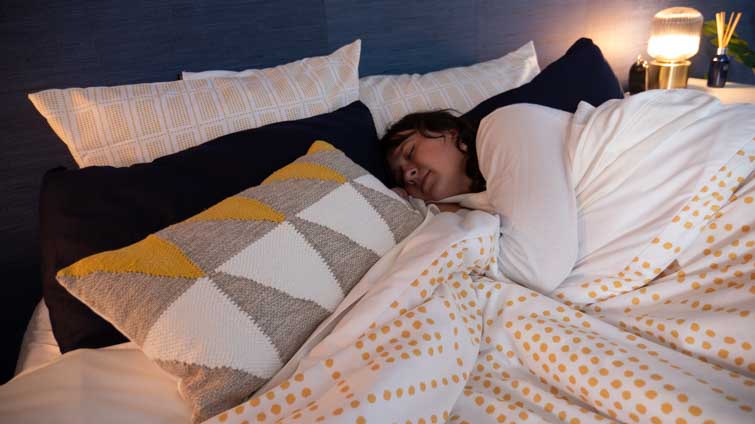
The center of a sleep oasis is the bed. Make sure your sleep oasis is as relaxing as possible by ensuring your mattress is comfortable and supportive. If your mattress is causing you pain or discomfort, it won’t matter what else you do to make your bedroom cozy.
Think about your primary sleeping position — are you a side sleeper, back sleeper, or stomach sleeper? You’ll also want to think about whether you are a hot sleeper, if you’re a heavyweight sleeper (who weighs 250 pounds or more), or if you share the bed with a partner. Your mattress should fit your needs to ensure you sleep comfortably throughout the night.
And if your current mattress is 10 years old or older, it might be time for an upgrade. Not sure what’s best for you? Take a look at our guide on how to choose a mattress.
Try At-Home Aromatherapy
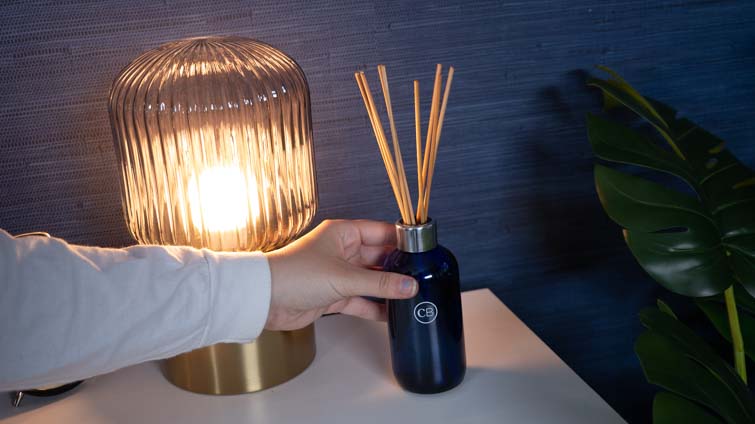
Whether you choose scents that are believed to have calming effects or simply choose a scent you love, at-home aromatherapy products, like essential oil diffusers, candles, and linen sprays, can solidify the sleep oasis vibe.
Scents and essential oils, like lavender, jasmine, sandalwood, or eucalyptus, are thought to provide a calming effect. Or if there’s another scent you love — and makes you feel relaxed — try that.
Try Some Softer Lighting
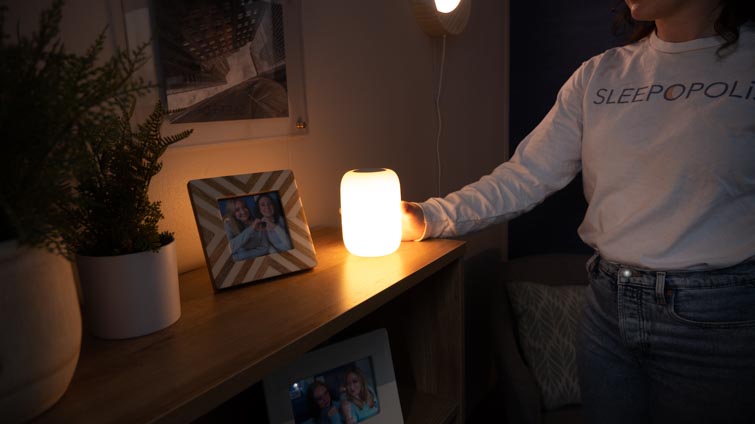
Franklin advises using soft, warm lighting in the bedroom, as it will create that sense of coziness and make you feel relaxed. You could swap out the light bulbs in your overhead lighting for something softer, or you could opt for some additional lighting.
Using additional lighting allows for a diffused look; instead of light shining directly down from the ceiling, it can bounce off different objects and cast a softer glow. A small lamp or reading light on your nightstand is a great way to add some additional lighting to your bedroom without taking up too much space.
Fairy lights or string lights are another good option to get that diffused light look. Or if you have the space, a floor lamp is another possibility.
Get Screens Out of the Bedroom
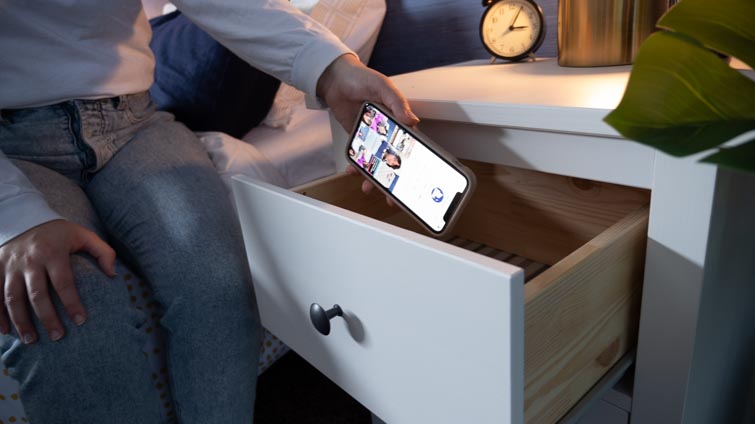
It’s no secret that screens and sleep don’t always mix. Blue light glasses are a popular option to prevent blue light from disrupting the circadian rhythm, but take it a step further by keeping as few screens in your room as possible.
Here’s a few quick tips to start getting tech out of the bedroom:
- If you have a TV in your bedroom, consider removing it to ensure you reduce screen time at least one hour before bed.
- Put your phone away, either in a drawer or another room, when you go to sleep.
- Try using an alarm clock instead of your phone to wake up in the morning. Sunrise alarm clocks, such as the Philips Wake-Up Light Alarm, harness your circadian rhythm by using light to gradually wake you up. That’s a much calmer way to start the day than a terrifying iPhone alarm (if you ask me).
Block Out the Light
Light can be a big disruptor to sleep. Especially if you live near streetlights or a busy street, light bleeding into your bedroom can keep you awake and throw off your well-cultivated sleep oasis.
To keep external light out, consider adding blackout curtains to your windows. They can work well to block not only light, but often sound as well. And with many options available online today, you can find a set that should work well with your bedroom color scheme and aesthetic.
Create a Luxurious Feeling Bed
Making your bed feel ultra-luxurious is one of Franklin’s tips for turning your bedroom into a sleep oasis, and as someone who reviews bedding products here on Sleepopolis, I completely agree.
Choose a set of sheets that you love the feeling of and that make sense for you. If you’re a hot sleeper, warmer fabrics like flannel may not be the best choice, even if you love how they feel. Bamboo sheets are a great option for a luxurious feel (and breathable material) that doesn’t break the bank.
You’ll also want to make sure you have the right pillow — one that fits your sleeping position, either back, side, or stomach. And don’t forget a comforter or duvet. One of my favorites I’ve tested recently is the Casper Humidity Fighting duvet. It feels like being wrapped up in a giant marshmallow, and it uses cooling materials to beat the heat.
Decorative throw pillows and blankets are another great option to add some coziness and color to your bed, but I’d recommend keeping it limited to just a few decorative pillows items. Loading up a bed with pillows may look attractive, but isn’t always functional for actually sleeping.
Make it Your Space
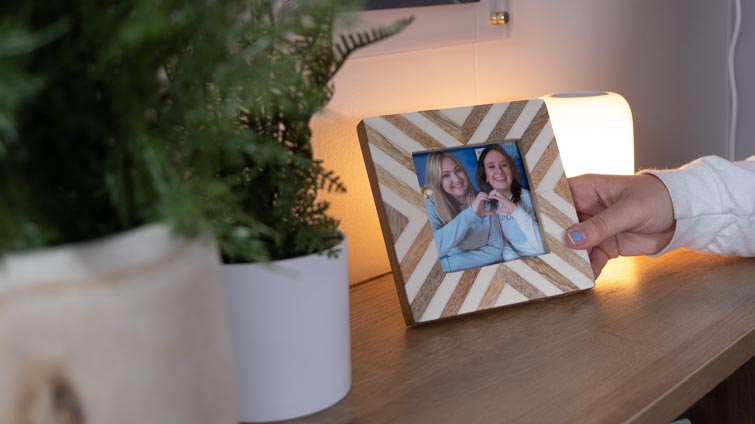
Above all else, make your bedroom feel like your space. Whether that means displaying some photos of treasured memories or artwork that makes you feel happy, add some details to your room that make it personal to you. Of course, don’t go overboard with knick knacks and trinkets (remember the rule about clutter), but a few key items can go a long way to add a personal touch.
Final Thoughts from Sleepopolis
These tips are just a jumping off point for creating your sleep oasis. Take what works for you and leave behind what doesn’t. After all, it’s your bedroom.
I hope you found these tips helpful and remember that creating a stress-free sleep oasis doesn’t necessarily mean buying a bunch of new items — you can start de-stressing your space with some simple decluttering and organization. You might be surprised how that alone can make you feel much more relaxed.
Good luck on your journey to stress-free sleep!
The post Your Complete Guide to Turning Your Bedroom into a Stress-Free Sleep Oasis appeared first on Sleepopolis.
